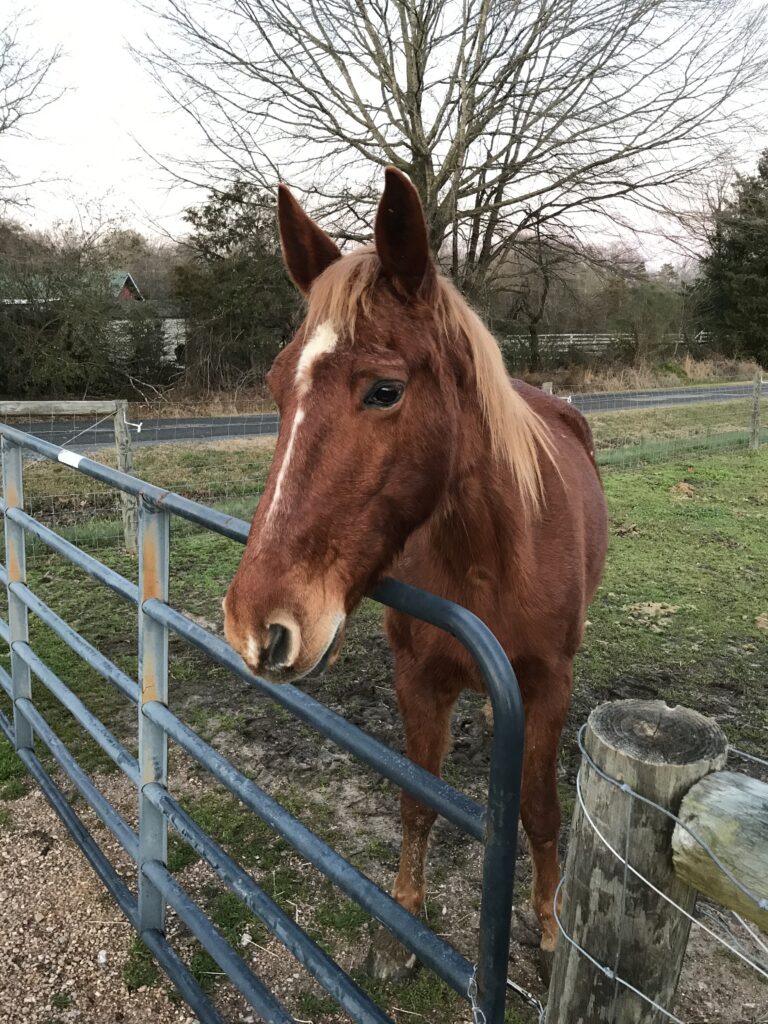Avoiding Colic Issues in Horses This Winter
go.ncsu.edu/readext?759013
en Español / em Português
El inglés es el idioma de control de esta página. En la medida en que haya algún conflicto entre la traducción al inglés y la traducción, el inglés prevalece.
Al hacer clic en el enlace de traducción se activa un servicio de traducción gratuito para convertir la página al español. Al igual que con cualquier traducción por Internet, la conversión no es sensible al contexto y puede que no traduzca el texto en su significado original. NC State Extension no garantiza la exactitud del texto traducido. Por favor, tenga en cuenta que algunas aplicaciones y/o servicios pueden no funcionar como se espera cuando se traducen.
Português
Inglês é o idioma de controle desta página. Na medida que haja algum conflito entre o texto original em Inglês e a tradução, o Inglês prevalece.
Ao clicar no link de tradução, um serviço gratuito de tradução será ativado para converter a página para o Português. Como em qualquer tradução pela internet, a conversão não é sensivel ao contexto e pode não ocorrer a tradução para o significado orginal. O serviço de Extensão da Carolina do Norte (NC State Extension) não garante a exatidão do texto traduzido. Por favor, observe que algumas funções ou serviços podem não funcionar como esperado após a tradução.
English
English is the controlling language of this page. To the extent there is any conflict between the English text and the translation, English controls.
Clicking on the translation link activates a free translation service to convert the page to Spanish. As with any Internet translation, the conversion is not context-sensitive and may not translate the text to its original meaning. NC State Extension does not guarantee the accuracy of the translated text. Please note that some applications and/or services may not function as expected when translated.
Collapse ▲
As we head into winter, horse owners face many challenges dealing with the cold weather. Unfortunately, winter can lead to a higher incidence of colic in horses. There are several ways horse owners can help reduce the chance of colic this winter.
The biggest factor to consider is the grazing behaviors of horses. Horses will spend 10-17 hours grazing each day. Their digestive tract is designed to handle a constant stream of forage. If hay and feed is restricted to only one or two times a day, this can create issues with the ability of the gut to digest the hay. Try to space your hay feedings out over the day if possible. Slowing down the consumption rate by using a hay net can help increase the time spent eating. This can also help alleviate boredom in a stall setting.
Many horse owners try to increase grain and concentrates in their horses’ diet in response to cold weather. However, hay does a better job of providing heat without upsetting the digestive tract. Make sure plenty of quality forage is available to help your horse handle the colder temperatures.
Since hay has much less water than pasture, it is important to ensure your horses are getting enough fresh water. Horses often drink less in the winter due to a combination of factors. Try to keep water temperatures above 45 degrees to encourage drinking. Horses also tend to drink more after a meal, so it is important to provide water when feeding. If you provide salt to encourage drinking, you must make sure there is abundant drinkable water. If water troughs are frozen or empty there is the possibility for issues with salt toxicity.
It is very important to have your hay tested. A lab can determine the quality of the hay, including factors such as digestibility. Look for the NDF value on a hay report. The higher the NDF, the less digestible and palatable the hay is. This indicates the hay has more structural carbohydrates which are harder for the gut to digest. Visually, the more stemmy the hay is, the less digestible the hay is and therefore has a greater likelihood of causing impactions. Various factors impact the leaf to stem ratio, including age or maturity of the grass at cutting as well as species of forage. Warm season grasses like Bermuda or Bahia grasses tend to have a lower leaf to stem ratio. Mature plants with lots of seed heads generally have higher NDF values and lower protein and energy.
Another factor to consider is exercise. Movement and exercise help move feed and hay along the digestive tract. Make sure your horse has access to turnout or some form of exercise throughout the day. Even hand walking a horse can help provided needed exercise. This is especially important for horses kept in stalls frequently.
The cold weather is approaching but by taking these simple precautions, you can help prevent colic and impaction issues in your horses this winter.




